Did you know 46% of all Google searches look for local information? That means nearly half of users are ready to find nearby businesses. If your company isn’t optimized for local searches, you’re missing out on potential clients.
Local search engine optimization blends technical know-how with community-focused tactics. A well-optimized Google Business Profile and localized content help your website rank higher. Mobile-friendly pages also play a big role, especially for “near me” searches.
Results take time—expect 6 to 12 months for full visibility. But with the right approach, your business can stand out in local searches and attract nearby customers.
Why Local SEO Matters for Your Business
Mobile users often convert into customers within hours of searching locally. In fact, 76% of mobile searches lead to in-store visits within a day. If your business isn’t visible in these searches, you’re losing potential revenue.
The Power of Local Search Trends
“Near me” searches have surged 150% year-over-year. From bakeries to HVAC services, customers rely on quick, accurate results. One bakery saw a 40% increase in foot traffic after optimizing for local queries.
Google’s local 3-pack dominates search results, appearing above organic listings. Businesses listed here gain prime visibility. Voice search amplifies this trend—queries like “OK Google, find plumbers near me” rely on local engine optimization.
- 88% of consumers trust online reviews as much as personal recommendations.
- Optimized pages load faster, keeping mobile users engaged.
- Hyper-local marketing bridges the gap between searches and sales.
Local search isn’t just about traffic—it’s about attracting ready-to-buy customers. Start optimizing now to secure your spot in their searches.
Optimize Your Google Business Profile
Businesses with optimized profiles receive 7x more clicks. A complete listing helps your company appear in local google search results and maps. Even high-end SEO services prioritize GBP optimization, proving its value.
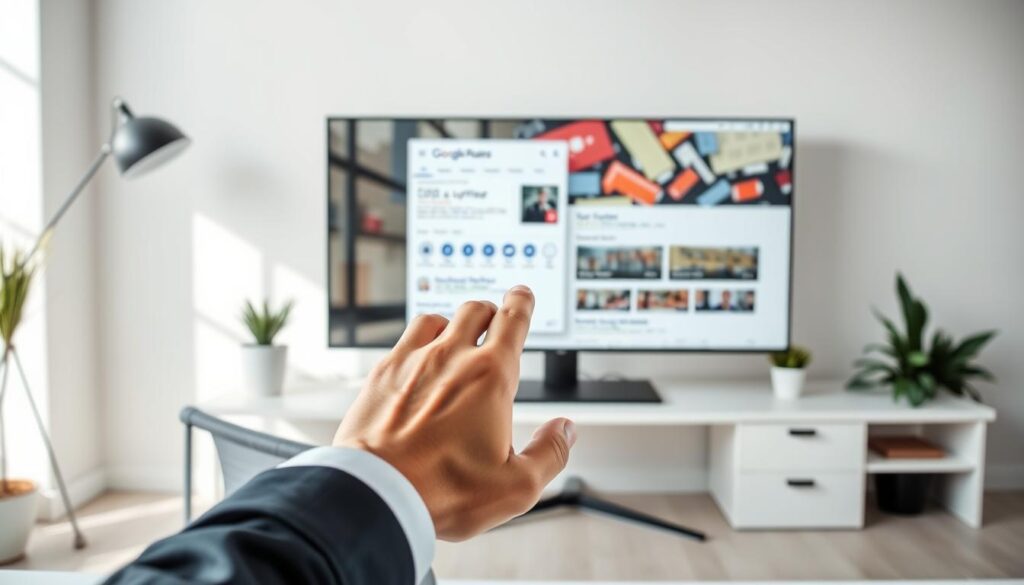
Start with Verification
Google requires verification to confirm your business details. Most receive a postcard by USPS with a code—this takes 5–7 days. Choose precise categories like “24-hour emergency plumber” for better visibility.
- Service area settings matter for businesses without physical locations.
- Update COVID-19 safety attributes if relevant to your industry.
- Post weekly promotions using Google Posts—this can boost CTR by 30%.
Keep your hours, photos, and descriptions current. Regular updates signal activity to Google’s algorithm, improving rankings over time.
Target Local Keywords Effectively
Nearly two-thirds of local searches include neighborhood names—are you targeting them? 64% of users add city or area terms to their queries. Miss these, and you miss potential customers.

Even niche searches like “refrigerated van fuel costs” show how specific local queries can be. The right keywords bridge the gap between searches and your business.
Pinpoint High-Value Keywords
Tools like Google Keyword Planner and Local Falcon reveal what locals search for. Analyze competitor profiles on Google My Business to spot gaps in their strategy.
- Location pages (e.g., “Denver HVAC Repair”) boost visibility for area-specific searches.
- Long-tail phrases like “24/7 electrician near me” attract urgent buyers.
- Track trends: “Open now” searches grew 200% post-pandemic.
Internal links to these pages help search engines understand your geographic focus. It’s the fastest way to climb local rankings.
Create High-Quality, Localized Content
Restaurants using neighborhood-focused blogs saw 25% more reservations. This proves how powerful localized content can be. When you tailor your message to nearby audiences, you build trust and relevance.

Long-form guides (2,000+ words) perform best for local searches. They provide actionable information while establishing your authority. Think of topics like “Best Parks in Brooklyn Heights” or “Local HVAC Maintenance Tips.”
Engage Your Community with Targeted Content
Here’s how to make your content stand out:
- Neighborhood guides: Highlight hidden gems, like cafes or trails, to attract locals.
- Collaborate with influencers: Interview community leaders for authentic stories.
- FAQ pages: Answer common questions about your service area.
- Repurpose content: Turn blogs into PDFs for local chambers of commerce.
Use local landmarks as visual anchors. A bakery might feature a popular nearby mural in its blog. This reinforces your connection to the area.
Remember, quality matters. Well-researched, localized content keeps readers engaged and boosts your search rankings.
Build Local Citations and Directories
82% of shoppers verify business details across multiple directories before visiting. Consistent listings build trust—businesses with accurate NAP (Name, Address, Phone) see a 47% higher credibility score. Citations act as digital signposts, guiding customers to your location.
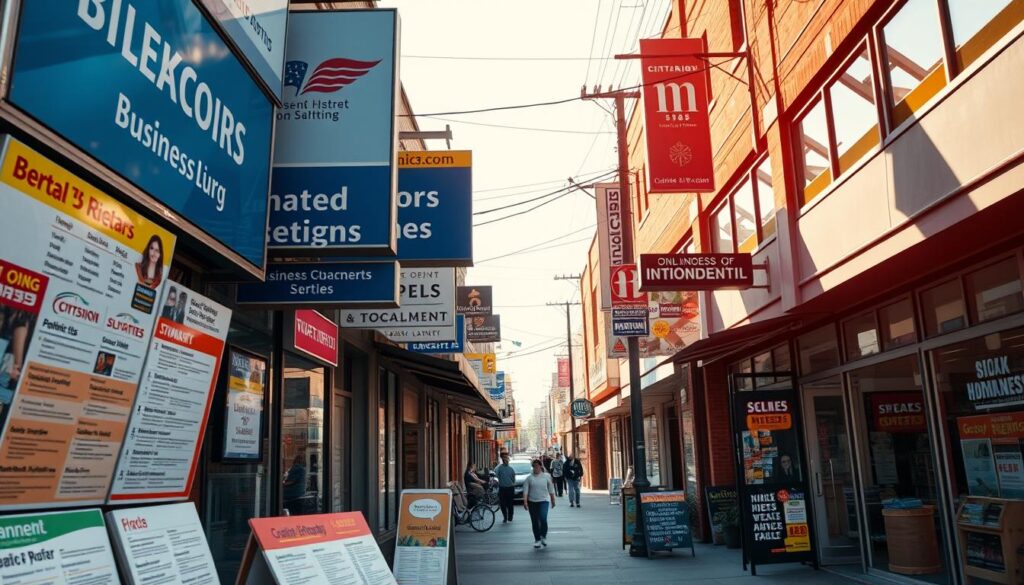
Top Platforms for Local Visibility
Start with essential directories like Apple Maps and Yelp. These sites dominate local searches. Industry-specific platforms, such as Healthgrades for medical services or Avvo for legal firms, target niche audiences.
- Local chambers of commerce: Listings here boost community trust.
- Social media profiles: Sync Facebook or LinkedIn with your GBP.
- Free resources: BBB and Yellow Pages remain popular for vetting businesses.
A tool like BrightLocal tracks citations and fixes errors. Duplicate listings hurt rankings—services like Yext merge them automatically. Always double-check your phone number accuracy across platforms.
Leverage Online Reviews and Testimonials
Customers trust online feedback as much as personal recommendations. In fact, review signals account for 15% of local pack rankings. Businesses that respond promptly see 33% higher revenue, proving engagement pays off.
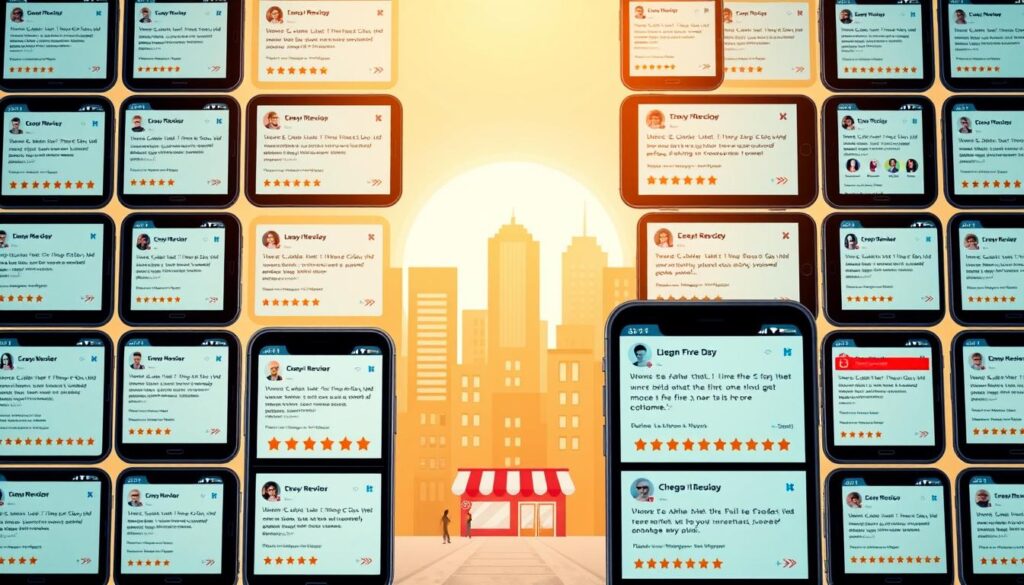
Positive ratings build credibility, while negative ones offer improvement opportunities. A bakery owner in Austin doubled reservations by showcasing Google reviews on their website.
Turn Satisfied Customers into Advocates
Here’s how to encourage authentic feedback:
- Automate requests: Send SMS review links after service appointments.
- Train staff: Teach teams to ask for reviews ethically, like at checkout.
- Highlight testimonials: Feature top reviews in Google Posts or landing pages.
- Monitor platforms Use Google’s redress process to report fake reviews.
For example, a HVAC company in Denver uses HubSpot workflows to request feedback. This keeps their profile active and attracts new clients.
Optimize Your Website for Mobile Users
Over half of visitors leave if your site loads too slowly on phones. With 53% mobile bounce rates when pages take over 3 seconds, speed becomes a make-or-break factor. Vertical videos perform particularly well, gaining 35% more engagement than horizontal formats.
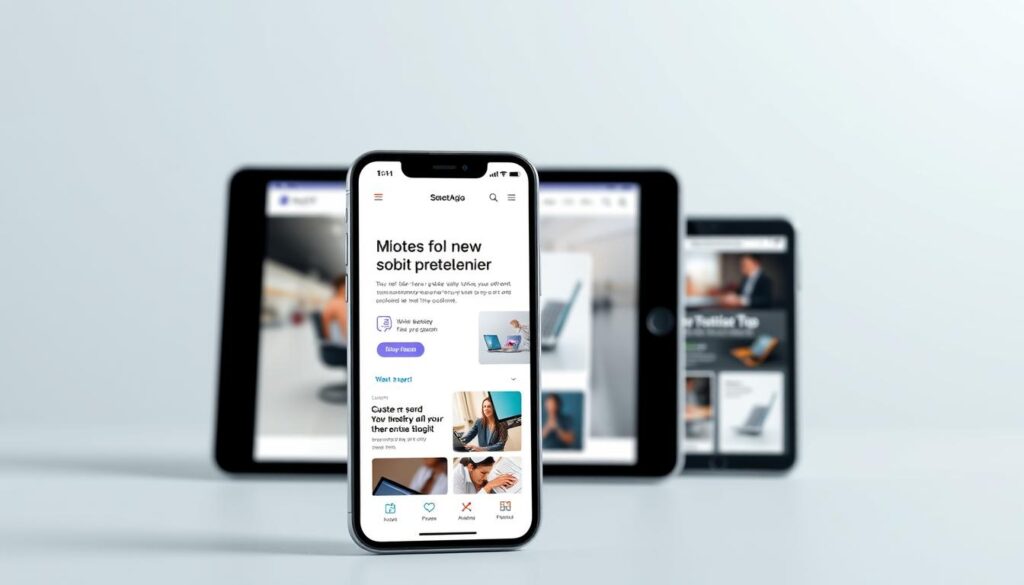
Essential Mobile Optimization Tactics
Google prioritizes mobile-first indexing, meaning your phone experience affects rankings. Here’s how to stay competitive:
- AMP implementation: Accelerated Mobile Pages streamline service pages for instant loading.
- Simplified forms: Reduce fields and enlarge buttons for thumb navigation.
- Local schema markup: Helps search engines display your address prominently.
- Video optimization: Use vertical formats for social media previews.
- Image compression: WebP format cuts file sizes without quality loss.
Test your progress with Google’s Mobile-Friendly Tool. For example, a Chicago bakery reduced bounce rates by 40% after compressing hero images. Mobile optimization isn’t just one part of local strategy—it’s the foundation.
Use Schema Markup for Local SEO
Ever wondered how some businesses appear with rich snippets in search results? Schema markup gives search engines clear data about your business, helping you stand out. Pages using this structured data rank 4 positions higher on average, according to recent studies.
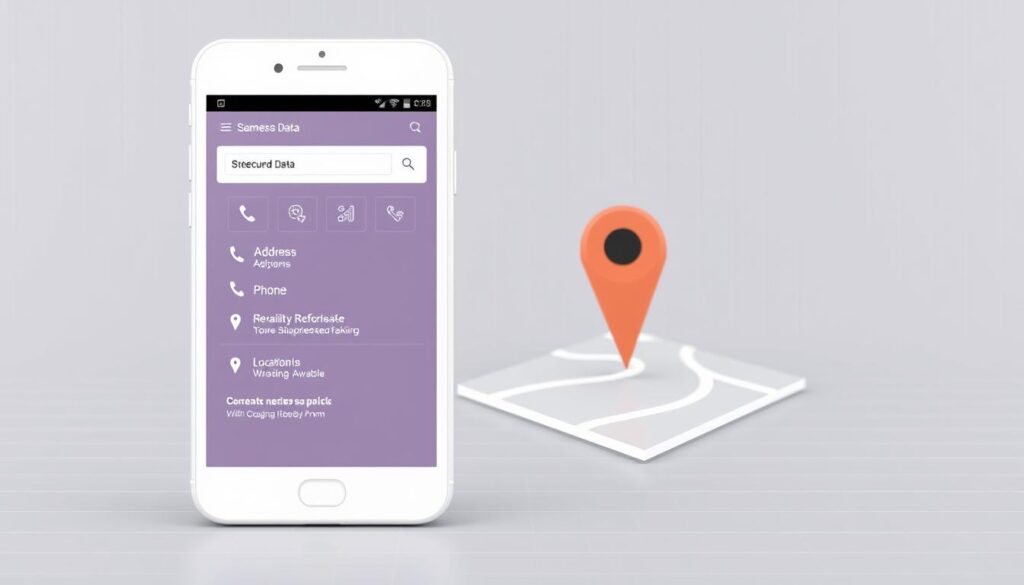
Boosting Visibility with Structured Data
Schema acts like a translator for search engines. It turns your contact details, services, and events into machine-readable code. This explains why 68% of featured snippets use schema—it makes content easier to understand.
Here’s how to implement it effectively:
- LocalBusiness schema: Include price ranges and service areas for better categorization.
- FAQ markup: Transform common questions into expandable search results.
- Breadcrumb trails: Help users navigate location-specific pages effortlessly.
- Event tags: Promote local workshops or sales with date and venue details.
Always test your markup with Google’s Structured Data Testing Tool. A hardware store in Portland saw 30% more clicks after adding schema to their product pages. This small technical step delivers big visibility rewards.
Focus on Local Link Building
Local partnerships can triple your backlinks—are you leveraging them? 92% of high-value links come from city-specific domains, making community connections essential. Unlike generic tactics, these strategies build trust while boosting rankings.
Collaborate for Mutual Growth
Sponsorships and alliances create authentic link building opportunities. A Tampa HVAC company gained 3x more backlinks by sponsoring Little League jerseys. Here’s how to replicate their success:
- Form local networks: Join groups like “Tampa Bay Home Services Network” for cross-promotions.
- Support community events: Charity partnerships often lead to featured media coverage.
- Guest post on Patch.com: Local news sites prioritize hyper-relevant content.
- Build resource hubs: Share neighborhood guides or toolkits with schools and libraries.
These efforts signal relevance to search engines. A bakery in Portland saw 40% more organic traffic after collaborating with a nearby coffee roaster. The way you engage locally matters as much as the links you earn.
Utilize Social Media for Local Engagement
Social platforms drive 250% more engagement when targeting nearby audiences. Geotagged posts alone get 28% more clicks, proving hyperlocal strategies outperform generic content. Focus on platforms where your community actively connects.
Top Platforms to Connect Locally
Not all networks work equally for local outreach. Prioritize these high-impact options:
- Facebook Groups: Create neighborhood-specific hubs (e.g., “Downtown Coffee Lovers”) to foster discussions.
- Instagram Stories: Use location tags and polls to engage nearby followers in real-time.
- LinkedIn Local: Host workshops or networking events for area professionals.
- Nextdoor: Run promotions like “First 10 Customers Get Free Delivery” to attract locals.
- TikTok Hashtags: Leverage trends like #TampaEats or #DenverStyle to boost discoverability.
Consistency matters. A Dallas bakery gained 40% more walk-ins by posting weekly behind-the-scenes video tours. Test different formats—live Q&As or user-generated content—to see what resonates.
Track Your Local SEO Performance
92% of local queries appear in Google Search Console—are you tracking yours? Without monitoring key metrics, you’re navigating blind. Position tracking for the local “map pack” proves especially crucial, as these listings drive most in-person visits.
Tools like Whitespark simplify rank monitoring across neighborhoods. One electrician in Phoenix discovered his listing dropped 5 spots for “emergency services”—a fixable issue caught early.
Essential Performance Indicators
Focus on these actionable metrics:
- Call conversions: Track the number of clicks-to-call from your Google Business Profile.
- Heatmap analysis: See where visitors engage most on local landing pages.
- Competitor benchmarks: Compare your GBP profile completeness against top rivals.
- Dashboard integration: Google Data Studio visualizes organic traffic by ZIP code.
A plumbing company in Atlanta boosted conversions by 22% after adjusting service areas based on heatmap results. Regular checks prevent wasted effort on underperforming tactics.
Invest in Local Paid Advertising
Local service ads convert at triple the rate of organic searches—are you leveraging them? With an 18% conversion rate compared to just 3% for organic, paid campaigns deliver faster results. For businesses needing immediate visibility, this marketing tactic bridges the gap while long-term strategies mature.
Precision Targeting with Google Ads
Geo-fencing lets you focus budgets where they matter most. A 5-mile radius around your store ensures ads reach nearby shoppers. For example, a Texas BBQ joint might use “y’all” in ad copy to resonate locally.
- Exclude competitor locations: Prevent wasted spend on irrelevant clicks.
- Promotion extensions: Highlight in-store deals like “10% off today only.”
- Call tracking: Tools like CallRail link calls directly to ad performance.
PPC costs often compete with hiring $75–$100/hr specialists. Yet ads provide instant traffic while organic efforts scale. Test small budgets first—even $10/day can reveal high-value keywords.
Stay Updated with SEO Trends
Google’s frequent updates make trend awareness non-negotiable for businesses. Core algorithm shifts can take 3–6 months to recover from, so proactive adjustments save valuable time. Voice search and AI are also reshaping local discovery—2024 predictions show a 40% rise in voice queries for nearby services.
How to Adapt to Changing Algorithms
Monitoring search engine updates ensures you’re never caught off guard. Follow Google’s Search Liaison on Twitter for real-time announcements. Here’s what else works:
- Embrace AI tools: Generate localized content faster while maintaining quality.
- Prioritize video: Optimize for video-first indexing with behind-the-scenes clips or tutorials.
- Add AI chat: Embed chatbots to answer FAQs like “Where’s your nearest location?”
- Join local forums: Facebook groups reveal hyperlocal trends before they hit mainstream.
For example, a Seattle bookstore uses AI to update neighborhood guides monthly. This keeps their content fresh and aligned with search behavior shifts. Adaptation isn’t optional—it’s the cost of visibility.
Conclusion
Implementing these strategies over 12 months can boost revenue by 60% for many businesses. Start with your Google Business Profile—it’s the foundation for local visibility. Track progress with quarterly reviews to stay ahead of competitors.
Want a quick win? Download our free local audit checklist to spot gaps in your strategy. It covers everything from citations to mobile optimization. Small tweaks often lead to big improvements.
Ready to attract nearby customers? Update your profile today and watch your business climb in local searches. Consistency pays off—stick with it, and results will follow.


